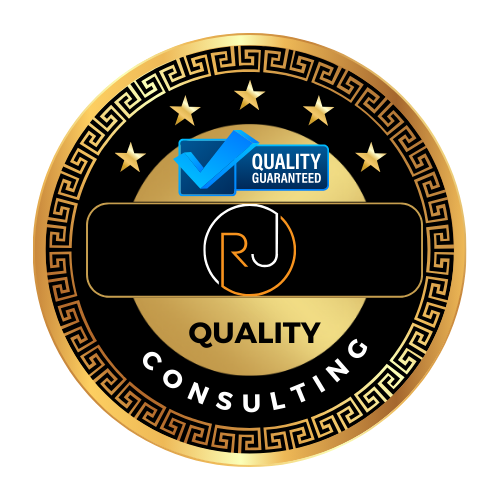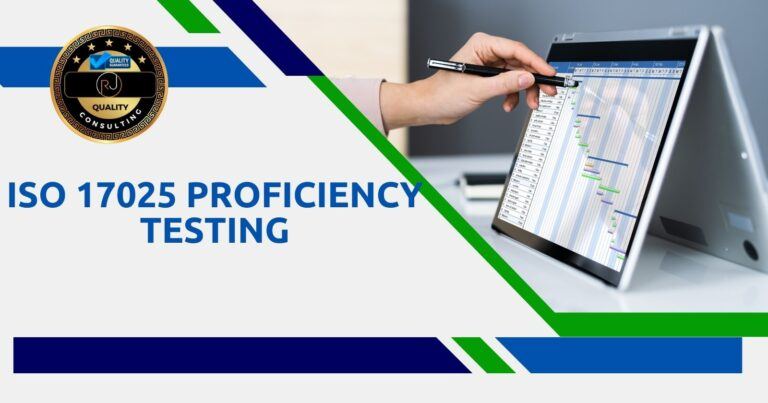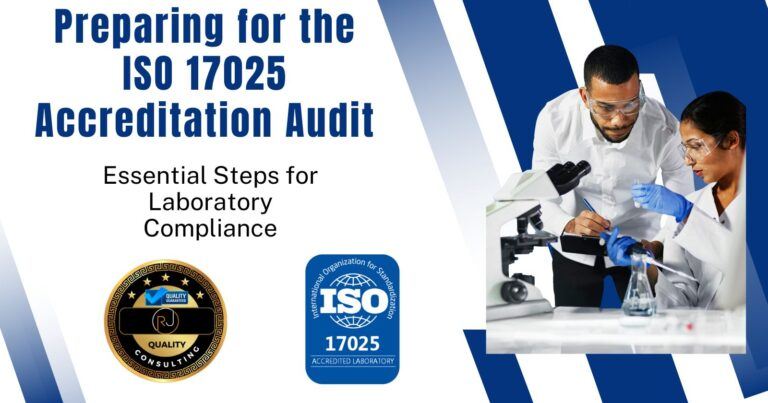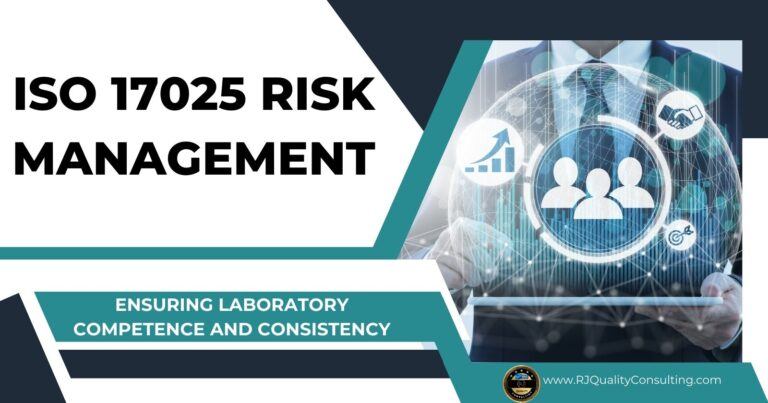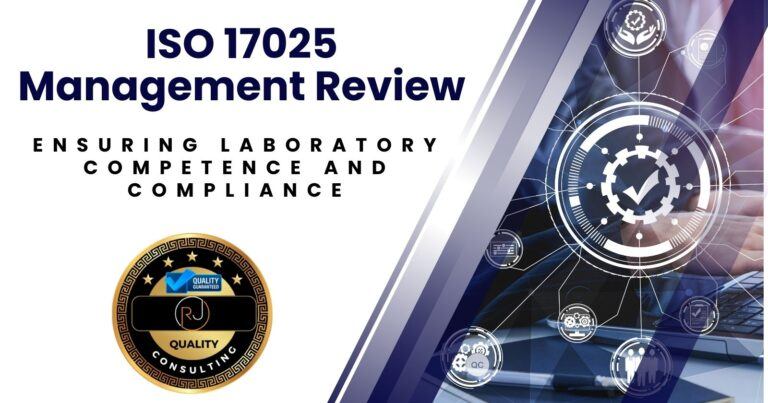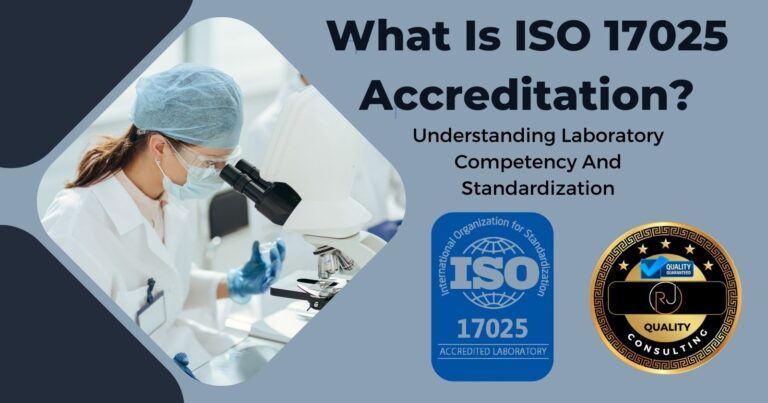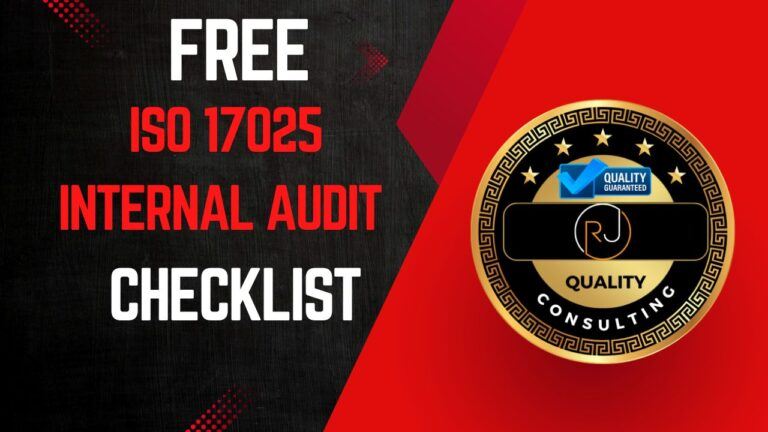Corrective Action in ISO 17025: Ensuring Laboratory Compliance and Quality Management
Corrective action in ISO/IEC 17025 is essential for laboratories to maintain their accreditation and ensure the reliability of their results. When a laboratory identifies nonconformities, whether it’s through internal audits or customer complaints, it must take corrective action. This action is not simply a reactive measure but a structured process that seeks to identify the root causes of the nonconformities and implement solutions that prevent their recurrence, thus driving continuous improvement within the laboratory’s Quality Management System.

The revised 2017 version of ISO/IEC 17025 places increased emphasis on the role of risk management in the corrective action process. Laboratories are expected to assess the risks associated with the identified nonconformities and prioritize the corrective actions accordingly. This emphasis on risk not only helps labs mitigate the negative effects of nonconformities but also aligns with an overall trend in quality management of placing proactive risk-based thinking at the heart of process improvements.
Key Takeaways
- Corrective action is a structured procedure to address and prevent the recurrence of nonconformities in a laboratory.
- The 2017 revision of ISO/IEC 17025 underscores the importance of integrating risk assessment into the corrective action process.
- Proactive identification and management of risks are crucial to enhancing a laboratory’s Quality Management System.
Understanding Corrective Actions in ISO 17025
Watch the video below to get a good understanding of the corrective action requirements in the ISO 17025 standard. Specifically, as detailed in clause 8.7 of the ISO/IEC 17025:2017 standard. This will give the laboratory a clear understanding of what is expected for an ISO 17025 accredited laboratory and what an auditor might expect to see in the laboratory’s corrective action process.
Corrective actions in ISO 17025 are crucial for maintaining the integrity of your quality management system by addressing nonconforming work. They form a foundation for continual improvement and compliance with the standard.
Book a FREE 45-Minute Consultation
During the Consultation We Will Give You a Clear Direction and Path For You to Move Forward with Your Certification or Accreditation Goals
Definition and Purpose of Corrective Actions
Corrective actions refer to measures taken to eliminate the causes of detected nonconformities to prevent recurrence. They are a critical component of your laboratory’s quality management system and are essential for:
- Ensuring the reliability of testing and calibration results.
- Maintaining customer confidence.
- Enhancing the performance of your management system.
The purpose of these actions is to address the root cause of a problem rather than its symptoms, fostering opportunities for improvements within your laboratory processes.
Differentiating Between Corrective and Remedial Actions
It’s important to differentiate between corrective actions and remedial actions to properly apply ISO 17025:
- Correction: A remedial action taken immediately to rectify an identified nonconforming work. It is a short-term solution that does not address the underlying cause of the problem.
- Corrective Action: Involves a corrective action procedure that includes evaluating and addressing the root cause of the nonconformity, to ensure such issues do not reoccur. This is a strategic approach that aims for long-term resolution and improvement.
By understanding these distinctions, you ensure that your laboratory’s actions are aligned with the intentions of the ISO/IEC 17025 standard, solidifying the benefits to your quality management system.
Changes in the 2017 Revision of ISO/IEC 17025
The 2017 revision of ISO/IEC 17025 introduces significant changes, notably transitioning to a risk-based approach and placing an enhanced focus on managing nonconformities and associated risks.

Shift From a Procedural to a Risk-Based Approach
In ISO/IEC 17025:2017, you will notice a substantial shift from a predominantly procedural focus to a risk-based approach. This approach mandates that your laboratory’s management system be arranged to identify and mitigate risks, as well as to capitalize on opportunities. Consequently, risk assessment becomes a cornerstone for your quality objectives and management review. You’re expected to:
- Integrate risk-based thinking with routine processes
- Evaluate risks and opportunities as part of decision-making
Emphasis on Identifying Similar Nonconformities and Updating Risks
The new revision places emphasis on identifying trends of nonconformity, suggesting that upon detection of a nonconformance, you should investigate similar ones. ISO/IEC 17025:2017 requires you to adopt procedures that not only address the immediate issue but also prevent recurrence. Here, risk management plays a pivotal role as it is essential to update the identified risks and opportunities whenever nonconformities arise. Your tasks include:
- Reviewing the effectiveness of corrective actions
- Updating risks based on detected nonconformities
Techniques for Effective Corrective Actions
When implementing corrective actions, you must first identify the root cause of the nonconformity. This ensures that your actions address the actual issue rather than just its symptoms.
Overview of Root Cause Analysis
Root Cause Analysis (RCA) is a systematic process for identifying the root causes of problems or events and an approach for responding to them. RCA practice is predicated on the belief that problems are best solved by attempting to correct or eliminate root causes, as opposed to merely addressing the immediately obvious symptoms.
Watch the video below to get a detailed understanding of how the corrective action process works along with root cause analysis. This video is from an ISO/IEC 17025 accreditation body known as PJLA.
Detailed Explanation of Techniques like Fishbone Diagram, Brainstorming, and the 5 Whys Method
Fishbone Diagram: Also called the Ishikawa diagram, this tool helps you visually map out the potential causes of an issue to identify its source. To use this technique:
- Start by placing the problem statement at the “head” of the fish.
- Draw lines that represent the “bones,” categorized by potential cause areas (people, processes, technology).
- Explore each category to list possible root causes.
Brainstorming: This collaborative idea generation method involves your entire team. During a brainstorming session, encourage all participants to contribute suggestions on potential root causes without criticism. This can lead to a list of ideas that may point towards the root cause.
5 Whys Method: A simple yet powerful tool for root cause analysis, the 5 Whys method involves asking “Why?” five times or until you reach the underlying cause of a problem. Example:
- Why did the machine stop? — The circuit overloaded, causing a fuse to blow.
- Why was the circuit overloaded? — There was insufficient lubrication on the bearings, so they locked up.
- Why was there insufficient lubrication on the bearings? — The oil pump on the machine is not circulating enough oil.
- Why is the pump not circulating enough oil? — The pump intake is clogged with metal shavings.
- Why is the intake clogged? — There is no filter on the pump.
Each answer forms the basis of the next question, guiding you to the root cause.
Case Studies/Examples

When you manage a laboratory, whether it’s a testing or calibration lab, encountering nonconformities is inevitable. The crucial part is how you address them. Here’s how different entities have handled corrective actions effectively:
Example 1: Calibration Lab A calibration lab identified a nonconformance in its temperature measurement process. By conducting root cause analysis for corrective action, it was revealed that a calibration instrument was out of specification. The lab:
- Corrected the immediate error by recalibrating the instrument.
- Took Action to prevent recurrence by modifying the maintenance schedule.
- Reviewed the potential impact on prior calibrations and informed affected customers.
Example 2: Testing Laboratory A testing laboratory encountered a data integrity issue, compromising test results’ reliability. They responded by:
- Isolating affected batches of tests.
- Investigating to pinpoint the software malfunction.
- Updating software and retraining staff.
Example 3: Accreditation Scenario During an accreditation audit, a nonconformance with documentation practices was found. The lab:
- Corrected documentation errors.
- Implemented a new document control system.
- Monitored the effectiveness through subsequent internal audits.
In each example, laboratories demonstrated their commitment to maintaining standards in line with ISO 17025. Actions taken included immediate corrections and strategic actions to prevent future issues, thereby upholding the integrity of their accreditation and the confidence in their testing or calibration results.
Monitoring and Reviewing Corrective Actions

When you implement corrective actions in context with ISO 17025, it is essential to not only resolve the immediate issue but also to ensure the solution is effective and sustainable. This requires continuous monitoring and a structured review process to assess the results of these actions.
The Importance of Evaluating the Effectiveness of Corrective Actions
In the realm of ISO 17025, corrective actions are paramount for maintaining the integrity and competence of a laboratory’s management system. After you have taken a corrective action, evaluating its effectiveness is a crucial step in the corrective action process. You should develop procedures for this evaluation that consider the following:
- Records of the nonconformance and the corrective action taken.
- Monitoring activities to observe the implementation of the corrective action.
- The impact on overall efficiency and competence of the laboratory processes.
The review part, often through an internal audit procedure, is where you check if the problem has been sufficiently addressed and if the risk of recurrence has been minimized. This often entails the following checklist:
- Has the root cause been addressed?
- Is there measurable improvement in the processes?
- Have new nonconformities emerged after implementing the corrective action?
Discussing the Need for Time and Additional Audits to Assess Effectiveness
Adequate time must be allowed to pass to accurately judge the effectiveness of corrective actions. This time period allows you to gather ample data to inform your review. You should also bear in mind that some corrective actions may necessitate changes in procedures or competence enhancement, and these need time to be fully integrated into the laboratory’s operations.
Further, additional audits are an essential part of this monitoring phase. Here’s how you should proceed:
- Schedule and conduct follow-up audits to specifically track the changes implemented.
- Document the findings of these audits to complete the feedback loop for the management system.
- If corrective actions are not yielding the intended results, initiate the corrective action process anew to fortify the system’s robustness.
Remember, your goal in monitoring and reviewing corrective actions is not merely compliance with ISO 17025 but the continuous improvement of your laboratory’s quality management system, ensuring the highest standard of service.
Implications for Laboratory Management Systems

Laboratory Management Systems must integrate corrective actions as central components, ensuring processes align with rigorous standards and specific criteria mandated by ISO/IEC 17025.
The Role of Management in Defining, Implementing, and Monitoring Corrective Actions
Your management team bears the primary responsibility for establishing and enforcing a clear protocol for corrective actions. This protocol must detail the mandatory procedures that kick in when nonconformities are identified. Management system requirements dictate that you:
- Define: What the nonconformity is, based on factual evidence.
- Implement: What actions will correct the fault and prevent recurrence.
- Monitor: How the effectiveness of these actions is assessed and verified over time.
Emphasis on the process approach ensures that corrective actions are not isolated events but part of a continuous improvement cycle within your Quality Management System (QMS). The management review process should regularly evaluate these actions, ensuring they align with the system’s integrity, including impartiality and confidentiality.
Updating Management Systems in Response to Identified Nonconformities
Upon recognizing nonconformities, your Quality Management System must evolve. This evolution is twofold, involving structural requirements and the proactive identification of risks and opportunities. You must:
- Document Changes: Keep precise records of what was altered in response to the nonconformity.
- Analyse Impact: Determine how these changes affect existing procedures and outcomes.
Opportunities for improvement are just as critical as the mitigation of risks. This balanced approach fortifies the system’s ability to consistently produce reliable results and maintain accreditation standards. Your commitment to monitoring and evaluating the QMS positions your laboratory to embrace change and drive quality upwards.
Conclusion – Corrective Action in ISO 17025

In the context of ISO/IEC 17025, corrective actions are integral to continually improving your laboratory’s operations. By adhering to these procedures, you take responsibility for not just resolving non-conformities but also for ensuring that such discrepancies do not recur.
- Identify and address: It’s essential that you thoroughly identify the root cause of any non-conformance.
- Implement: Upon identification, implement the necessary corrective actions promptly.
- Document: Meticulously document the corrective action process to maintain the integrity of your Quality Management System (QMS).
Your QMS benefits from corrective actions as they constitute a cyclical process of feedback and improvement. This practice upholds the quality policy of your organization and demonstrates a commitment to excellence and compliance.
Remember, the goal of incorporating ISO/IEC 17025 standards isn’t to perform a one-time fix but to foster an environment of perpetual improvement. By taking corrective actions seriously, you solidify your laboratory’s credibility and enhance the overall quality of your work.
Frequently Asked Questions

In this section, you’ll find concise answers to common inquiries regarding the corrective action protocol as delineated in the ISO 17025 standard, ensuring that your laboratory maintains compliance and quality management.
How is corrective action defined within a laboratory context according to ISO 17025?
Corrective action in the context of ISO 17025 is the process undertaken in a laboratory to eliminate the cause of a detected nonconformity or other undesirable situation. It is meant to prevent recurrence, ensuring the integrity of your laboratory’s output.
What are the main steps involved in managing a corrective action under ISO 17025?
The primary steps for managing corrective action include identifying the nonconformity, documenting it, determining the root cause, planning and implementing the corrective action, and reviewing and monitoring the action’s efficacy to prevent recurrence.
How does the requirement of root cause analysis integrate into the corrective action process in ISO 17025?
Root cause analysis is integral to the corrective action process in ISO 17025 because it helps to identify the underlying reasons for the nonconformity. It aids in ensuring that your corrective actions address fundamental issues, not just symptoms.
What is the difference between nonconforming work and corrective action?
Nonconforming work refers to a departure from the quality standards and procedures established by ISO 17025. Corrective action, on the other hand, involves the steps you take after identifying a nonconformity, aimed at eliminating its causes and preventing its recurrence.
What procedures must be followed to ensure that corrective actions are effectively implemented in an ISO 17025 accredited lab?
To ensure effective implementation of corrective actions in an ISO 17025 accredited lab, you must document the nonconformity, perform a root cause analysis, develop and implement an action plan, and conduct follow-up activities to review the actions taken. This process should also be risk-based, meaning not every nonconformity necessitates a corrective action, depending on the associated risk.
